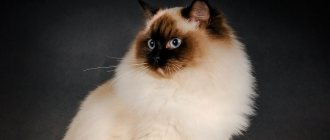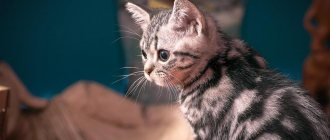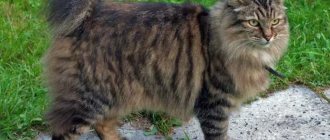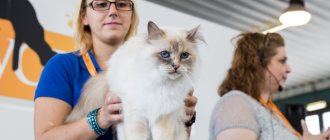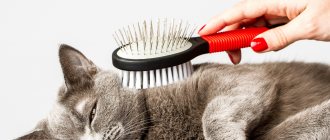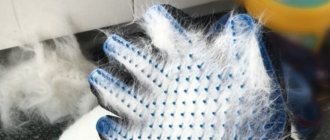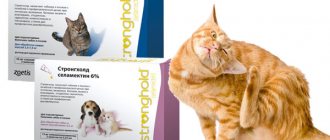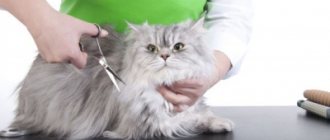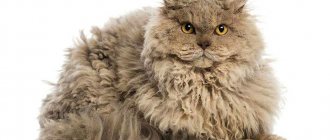A plush cat is not a specific breed, it is only a characteristic of the quality of the coat. Cats with plush fur are found in several breeds. Why are they like this? How are they different from others? Cat breeds with plush fur are distinguished by the fact that they have a lot of padded undercoat, and the guard hair is quite short. This makes them look like bear cubs. If the undercoat is combed out, such animals lose their charm.
British Shorthair
This cat breed is quite popular now. It was bred in England in the 19th century by crossing Persian and English domestic. When “plush” British cats began to be shown at exhibitions, they were recognized as the best. The aristocratic public indulged these cats with their attention. And later the breed began to be in demand in other countries.
Today, cats with “plush” fur of the British Shorthair breed are so common that they can be found in almost every home.
Longhair
Burmese cat
Burma, as these cats are called for short, has the luxurious fur coat of the Persians and the original color of the Siamese. There are many legends and tales wandering around the breed and they are called “sacred”. It is difficult to say what is true and what is fiction, however, the Burmese are truly distinguished by their “holy” character.
They are playful, but not dirty, active, but in moderation. They do not impose their communication and agree to wait until the owner has time to communicate. The Burmese cat gets along with children, but does not like excessive noise and tense environments.
Neva Masquerade
They are called Siberians with Siamese sophistication; cats and cats of this breed are beautiful, large and very colorful. But this is by no means a merit of the efforts of the breeders, but the result of an accidental love between a Siberian cat and a cat with a Siamese color (it is not known for sure whether she was Siamese or Himalayan).
The Neva cat is a long-liver, its fur does not cause allergies and does not require painstaking care. She has a certain charisma - she loves to show off, but she is distrustful of strangers. Adapts perfectly to new conditions and loves his family.
Norwegian Forest Cat
Once upon a time, this large, colorful animal with long luxurious hair lived in the Norwegian forests. Naturally, this determined his hunting qualities and endurance, but selection work turned the cat into a cute domestic creature that retained high intelligence and beautiful appearance.
The Norwegian Forest cat is suitable for indoor keeping; it is very balanced and calm. He loves to communicate, but sometimes he doesn’t mind being alone. Finds a common language with other pets and is good with children.
Persian cat
Cats of this breed are hard to miss - after all, they have an extravagant appearance - a wide muzzle with a flattened nose and the most luxurious fur. The breed has undergone a number of changes, not always positive, but today it has no flaws, and its representatives are healthy and active.
The Persian cat is an ideal companion that does not like loneliness and is not suited to living on the street - only with a person does it feel calm and confident.
Ragdoll
A young amazing breed of cats that can completely relax all their muscles, which is why its name translates as rag doll. These are quite large animals with beautiful fur. Born with white fur, after a year and a half it acquires the most incredible colors.
Ragdolls are absolutely sociable cats; loneliness is difficult for them, and they are ready to follow their owner anywhere. They are phlegmatic, they love to lie around, but they also don’t mind playing, especially with children.
Siberian cat
This is a native breed of Siberia and is believed to have descended from wild forest cats. Stocky, large (cats weigh up to 12 kg), fluffy - cats of this breed cannot leave anyone indifferent.
The Siberian cat has a developed hunter instinct, therefore, even if it gets lost, the pet will not disappear and will be able to provide itself with food. This quality also helps rid the house of rodents. These pets are unpretentious in all aspects of life, intelligent, but somewhat reserved.
Description and character of the breed
The standards of this feline species include the following characteristics:
- the head is large, round in shape, the skull is flat, with wide cheekbones and drooping cheeks;
- the neck is short, with a fold of skin around it;
- the nose is of medium length, wide, forms a depression at the junction of the forehead;
- strong chin;
- medium-sized ears, rounded tips, low set;
- the eyes are large and round, set wide apart, and have a rich color - bright orange, blue or green;
- medium-sized or large, massive body;
- the back is flat, smooth, the chest is wide, weight is from 4 to 6 kg;
- paws are dense, muscular, short;
- the tail is short, thickened at the base and tapering towards the tip;
- The coat is thick, dense, short, reminiscent of plush, of the same length, there is an undercoat, the color can be different.
The character of the British cat is complex. She is balanced, not too active, prefers a measured life. With age she becomes even more sedate. The British are not very attached to the owner, but they avoid strangers. It is important for them to have their own space; they may hide in a secluded corner to be alone. Grooming your cat will not take much time; just brush its fur weekly.
How to choose a kitten
If you want to purchase a purebred real British dog, then you should pay attention to the characteristics of the breed (the standards of which were approved back in 1982). These standards include:
These standards include:
- strong muscular body;
- powerful legs, like those of an exotic;
- massive round head on a short powerful neck;
- straight, wide and slightly shortened nose, without a stop, but pronounced towards the forehead;
- round muzzle without indentations (pinch is not allowed), well-developed chin, round, wide-set eyes;
- rounded, wide-set ears (the height of which should not exceed their width);
- straight (medium in length, but wide) tail with a rounded tip;
- short, dense wool with a plush-like texture;
- fold of skin around the head.
A British kitten's walk should be full of vivid impressions
In addition to the characteristics of the breed, you should definitely pay attention to the documents and living conditions of the kittens. If the breeders do not treat the animals properly (the place is not clean, has a characteristic unpleasant smell, the animal is given cheap food for food, it is kept in a cage), turn around and go to another place
If the breeders do not treat the animals properly (the place is not clean, has a characteristic unpleasant smell, the animal is given cheap food, it is kept in a cage), turn around and go to another place.
It is worth paying attention to the parents of the kittens (you will be able to understand what your “plush” will be like). Look at color, weight and other features
If your Briton is a ginger cat, then his offspring will be the same.
Please also pay attention to the fact that kittens should not be purchased before 12 weeks of age, as they still need maternal care
There must be something edible in this basket, well, at least a sausage!
Exotic breed
These cats are loved by many for their appearance, friendly nature and activity. Externally, exotics look like charming toys: large eyes with a surprised expression, a flattened nose and “plush” fur.
The first representatives of the breed appeared in the 50s of the 20th century as a result of an unsuccessful experiment by crossing a Persian with an American shorthair. The breeders' goal was to change the color and make the bones heavier. As a result, the result was not at all what was expected, but the new species pleased the breeders a lot, and it was decided to continue breeding similar cats.
This is how a breed of exotic shorthair appeared, which, by its standards, repeated the parameters of the Persian cat, but was distinguished by unusual hair.
Health
Considering the efforts of the breeders, the British were in good health.
These cats are prone to obesity and tearfulness, but otherwise are susceptible to the same diseases as cats of other breeds.
Characteristic diseases
If you do not properly care for your pet: feed it poorly, do not provide proper care and do not take care of its mental state, then it may develop one of the following diseases:
- KSD, cystitis, nephrosis and other diseases of the genitourinary system;
- Bronchitis, rhinitis and other respiratory diseases;
- inflammation of the spinal cord and neuroses;
- stomatitis, pharyngitis, ulcer
- and many other diseases.
British kittens are excellent camouflages
Vaccinations
The Briton needs to have some vaccinations , before which it is important to give the kitten anthelmintic drugs.
- Produced in 10-12 weeks. This is a rabies vaccine (trivalent). It repeats after 3 weeks.
- The rabies vaccination is given after changing teeth and is repeated annually.
British cat helps prepare for Easter
All manipulations must be noted in the passport. When buying a kitten, you need to check them
Description of “plush” cats of an exotic breed
The appearance of representatives of this breed is simply unique, and it is simply impossible to confuse them with any others. The animals are distinguished by their strong build and rounded body shape. Exotics' eyes are round and large, set wide apart. The coat is thick and “plush”.
Description of appearance:
- the skull is large, wide, the head is massive, the neck is short, strong, the nose is short, neat, the cheeks are full, the chin and jaws are strong;
- ears are small, set wide apart, with rounded tips;
- the eyes are large, round and expressive; it is for the expression of the eyes that the breed parameter is noted as “sweet expression of the muzzle”;
- the body is stocky, muscular, the chest is wide;
- the paws are short, strong, with tufts of hair between the toes;
- the tail is short, fluffy, the tip is rounded.
The fur of exotic cats is like plush. Its length is average, the color can be any except light beige and cinnamon.
By nature, exotics are friendly and get along with any family members. However, they need time to get used to new people or animals. Once in a family, the cat will first observe the behavior of its owners. Having looked closely, he will choose the main person to whom he will be devoted, like a dog, and will be simply friendly with everyone else.
Persian cat
These are quite massive cats with a soft expression on their faces. The head is decorated with a short snub nose, the lobe of which is colored in accordance with the main color of the animal, and round, slightly protruding eyes. The long, thick hair gives the roundness and smoothness of the body curves.
Persians can be white, gray, cream, blue, red, lilac, red and black. Males reach a weight of 7 kg, and females - 5. The average life expectancy is 11-15 years.
Thanks to selective selection, Persian cats are the most domestic breed, not adapted to street life. They meow little, but love to communicate, especially with children. It is not difficult to teach them the rules of behavior, they quickly get used to the toilet and can even be trained.
Due to their excessively long coat, Persians require regular grooming procedures: daily brushing, using a furminator once a week, and bathing once every 2-3 weeks.
Learn more about the beautiful and fluffy Persian cats.
Scottish fold, or Scottish fold
“Teddy” cats of the Scottish Fold breed are incredibly popular due to their appearance. This cat resembles a baby owl - its round face has almost no ears visible, and its eyes are large and round.
The breed originated in Scotland. In 1961, William Ross bought a cat and named her Susie. It was from her that the breed originated after several crossings. The first representatives of the Scots were not very attractive, but after crossing with the British Smoothhair, the cat acquired unique features, and the breed was recognized as independent.
However, the further path to recognition turned out to be very difficult. In 1971, thanks to research, they learned that the gene responsible for the shape of the ears often leads to deafness in animals. Geneticists prohibited the breed. But photos of “plush” cats have already spread around the world and won the hearts of cat lovers. Therefore, they began to look for ways to eliminate the problem, and in the end a solution was found: mating of two Scottish folds was prohibited, they were crossed with straights.
Breed standards:
- the body is medium in size, stocky, with dense bones and a voluminous chest, a wide back, the cat’s weight is 4-7 kg;
- the neck is short, massive, the tail is of medium length, tapering to the tip;
- the head is round;
- the paws are not long, muscular, thick, very similar to the legs of plush toys;
- eyes are large, round, yellow or green;
- short nose;
- the ears are small, with bends covering the shell, with a wide fit, turning forward;
- The fur is short and dense, reminiscent of plush, its color can be different.
American Curl
The American Curl is one of the most expensive cat breeds, first discovered in 1981 in California. These cute creatures are famous for their small protruding ears that resemble horns. Curls can be short-haired or long-haired, and their color comes in absolutely any color.
These cats have a graceful, medium-sized body and look quite well-fed. Females reach a weight of 3-5 kg, and males - 5-7 kg.
Representatives of American Curls are characterized by the following external signs:
- wedge-shaped head, wide ears turned at an angle from 90 to 180 degrees, large hazel-shaped eyes;
- rectangular body with a strong, straight chest;
- straight-set paws, strong neck, flexible and pointed tail.
American Curls do not have genetic diseases, despite the unusual shape of their ears. The curl gene of these animals does not have negative consequences for the health of the pet.
Find out all about the unusual American Curl cats.
Scottish fold character
By nature, cats of this breed are docile and calm. They cannot be called mischievous and active; they are rather intellectuals who do not allow themselves to hang on the curtains or rush around the apartment. It is more pleasant for them to lounge on the sofa near the owner, but there is no need for excessive affection.
The Scottish Fold likes people who respect their personal space. Although outwardly the cat looks indifferent, in fact it is loyal, it just does not show its feelings. This is almost the calmest cat breed in the whole world. Scottish Folds do not show aggression, do not get into conflicts, and rarely meow. These cats love to take interesting poses - stretching out their paws, standing in a column like meerkats, sleeping on their backs.
One of the characteristics of the breed is the inability to jump from heights, so Scottish Folds try to stay in the lower part of the room.
“Teddy” cats of the Scottish Fold breed are very friendly and become attached to members of the human family where they live. They are ideal four-legged friends for children, you can play with them, but you shouldn’t offend them, these cats have a vulnerable psyche.
Scottish Folds have a developed intelligence, they are excellent at learning commands and tricks, but they strive to do only what interests them. Their reluctance to follow anyone's lead is often interpreted as laziness.
Caring for a cat of this breed involves brushing the fur once a week, but you should not do this with a slicker brush.
Difficulties of care
Those wishing to purchase a plush cat should know that a thick undercoat can cause some difficulties in care. During shedding (and for many domestic cats it lasts all year round, because their biorhythms are disrupted), fur flies all over the apartment. At first glance, it seems that if an animal is short-haired, then it has less hair. This is wrong. There may be even more in quantity, because... The undercoat is thick, but collecting it from the floor and objects can be very problematic - no matter how much you collect, it is still everywhere.
However, it is worth noting that not all shorthaired cats shed. Among the listed breeds there are no non-shedding ones, but there are individual representatives that are distinguished by this quality.
For those who shed, there are several recommendations. Firstly, such cats need to be brushed regularly during shedding. Ordinary scallops and even furminators are not suitable for this. The first ones do not give the desired result, practically without combing the undercoat. The latter can damage even the living undercoat, thereby depriving the cat of its beauty. A special glove is best suited for plush cats. Secondly, during shedding, such cats can be bathed, which helps to wash out the lost hair.
Is it worth buying such a kitten? If short hair and ease of care are the only reason you want to settle on a kitten belonging to one of the listed breeds, you should refuse the choice. There will be difficulties in care! Otherwise, caring for a plush cat is the same as caring for any other cat.
If you want such a cat because you are crazy about its beauty and are ready to put up with some difficulties for its sake, welcome to the website of Scottish and British cats “Murkotiki”, where you will learn a lot of information about these breeds.
Cornish Rex
This breed of “plush” cats (pictured below) appeared in the 50s of the 20th century, when a strange kitten with “plush” fur was born in a cat litter on an English farm. They called him Kalibunker. The cat's owner decided to take him for castration, but the veterinarian saw in the pet the future founder of a new breed. Nina Ennismore, the cat's owner, became responsible for the development of this species and came up with its name - Cornish Rex.
The breed was on the verge of extinction several times until it was finally registered by a felinological organization in 1983.
The influence of genetics on cat color
There are two main colors responsible for variations in the colors of a cat’s fur coat:
- black;
- red.
Each color is formed due to a complex pigment - melanin, which is divided into two chemical subtypes:
- zumelanin (gene B) - is responsible for the black color and its derivatives;
- pheomelanin (gene A) - produces all shades of red.
The genes responsible for producing red (O - dominant) or black (o - recessive) offspring are located on the X chromosome. The color of a kitten's fur directly depends on the gender of the parents:
- cats have one X chromosome and one Y chromosome (XY);
- Cats have two X chromosomes (XX).
The kitten inherits one of the chromosomes from each parent. From the mother it will always be X, and from the father X or Y.
Just like in humans, female cats have a set of XX chromosomes, and males have XY chromosomes.
Two cat chromosomes (XX) are responsible for three basic colors:
- OO - red;
- oo - black;
- Oo - tortoiseshell (red-black).
The color of cats directly depends on which gene is carried by the only X chromosome of the parent - O or o. If there is an “O” gene on the only X chromosome of a cat, the cat will be red, but if there is an “o”, it will be black. Tortoiseshell cats appear only in the case of gene mutations and cannot have offspring.
If the parent X chromosome carries the O gene, the cat will be red, and if O, the cat will be black.
The white color stands out separately (although it is not a color at all, but rather its absence). If a cat is not an albino, then it is a carrier of some color.
Genetics of gray color
In felinology, the gray color of a cat's coat is called blue. In fact, the blue color is a bleached black. In gray pets, the dominant black gene B (Black) is diluted by the recessive light gene d. The black pigment (zumelanin), under the influence of the light gene, is not distributed evenly in the hair, but as if sticking together into lumps. The white spaces between the clumped zumelanin granules create a lightening effect. The less black pigment in the hair, the lighter the color of the cat.
Description
Representatives of the Cornish look sophisticated and gentle, but behind this appearance there is a rather strong animal. Curly hair, strong bones and strong muscles, sharp claws and teeth - this is what distinguishes these cats.
Breed standards:
- The head is egg-shaped or triangular, the muzzle is wedge-shaped, the nose is Roman type, the cheekbones are high and clearly defined.
- The ears are wide at the base, cone-shaped, and set wide apart. The ends are rounded.
- The eyes are slanted, widely spaced.
- The neck is long and graceful.
- The body is strong and agile, the body is slender, the stomach is tucked, and the waist is noticeable.
- The tail is long and mobile.
- The limbs are fine-boned, muscular, and there are long toes on the paws.
- Soft and silky wool is the advantage of the breed. It fits tightly to the body, lies in even waves, and is curly.
- The color can be different, including Siamese (in this case the cat is called a Si-rex).
Peculiarities
The history of the appearance of short-haired cats takes us back into the depths of time, 60 million years ago, to the miacids, the ancestors of all predators on Earth, including cats. Over time, the weight of the animal became smaller, and about nine million years ago, animals appeared that were somewhat similar to modern felines.
Today, short-haired cats include breeds of cats whose hair does not exceed 4.5 cm in length. When compared to human hair, wool has a more complex composition. The follicles of an animal contain two types of hair at once: guard hair, which makes up the fur, and down hair (undercoat). The guard (integumentary) can have different lengths, thickness and rigidity. The thickest and longest fibers are called guides.
A guard hair may emerge from one follicle, surrounded by a whole tuft of fluff. It always lies on top, covering the down, thereby saving the animal from frost and precipitation.
The density of the undercoat and guard hairs depends on the climatic conditions in which the cats live. Northern animals have much thicker and warmer fur, with a lot of fluff. In the south there live cats with short hair that fits tightly to the body. Selected animals brought confusion into the natural pattern. Today, there are species that have no undercoat at all (Burmese), or even wool (Don Sphynx).
Rexes, contrary to the straight guard coat created by nature, are endowed with a wavy mutation. And the type of fur “brush” (some sphinxes have) looks like hard twisted wire.
Character
This “plush” Cornish Rex cat is truly unique not only in appearance, but also in character. Representatives of the breed are considered very active and playful. Lying on the couch is definitely not for them. Cornish cats are inquisitive and active, constantly exploring the room. Any item is regarded as a toy, so the owner of the animal should take care of the safety of valuable and fragile things. Cornish Rexes are delighted with chases and other outdoor games.
Here are the main breeds of “plush” cats that are known and popular all over the world.
Soft toy review
The cat named Basik can have different sizes in a sitting position: 19 cm, 22 cm, 25 cm, 30 cm. The cat Basik, presented as a pillow, is 40 cm.
The packaging is made of kraft cardboard, corresponding to the size of the toy. According to the company, this is where the cat lives and travels in it. This is not surprising, especially for those who are familiar with the habits of living mustachioed friends. Each box has a sticker with a description of the traveler (eye color, coloring, coat), care tips, and a line for entering information about the owner.
